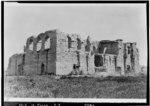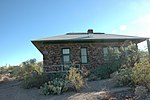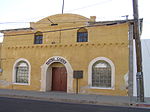Sentinel Peak (Arizona)
GeoglyphsGeography of Tucson, ArizonaHill figures in the United StatesLandforms of Pima County, ArizonaLandmarks in Tucson, Arizona ... and 5 more
Mountains of ArizonaMountains of Pima County, ArizonaUniversity of ArizonaUse American English from December 2022Use mdy dates from December 2022

Sentinel Peak is a 2,897 ft (900 m) peak in the Tucson Mountains southwest of downtown Tucson, Arizona, United States. The valley's first inhabitants grew crops at the mountain's base, along the Santa Cruz River. The name "Tucson" is derived from the O'odham Cuk Ṣon ([tʃʊk ʂɔːn]), meaning "[at the] base of the black [hill]". In the 1910s, University of Arizona students used local basalt rock to construct a 160 ft (50 m) tall block "A" on the mountain's east face, near its summit, giving the peak its other name, "A" Mountain. The peak is part of a 272-acre (110 hectares) park, the largest natural resource park in the City of Tucson.
Excerpt from the Wikipedia article Sentinel Peak (Arizona) (License: CC BY-SA 3.0, Authors, Images).Sentinel Peak (Arizona)
South Sentinel Peak Road, Tucson
Geographical coordinates (GPS) Address Nearby Places Show on map
Geographical coordinates (GPS)
| Latitude | Longitude |
|---|---|
| N 32.210268833 ° | E -110.992278114 ° |
Address
The big "A"
South Sentinel Peak Road
85701 Tucson
Arizona, United States
Open on Google Maps








